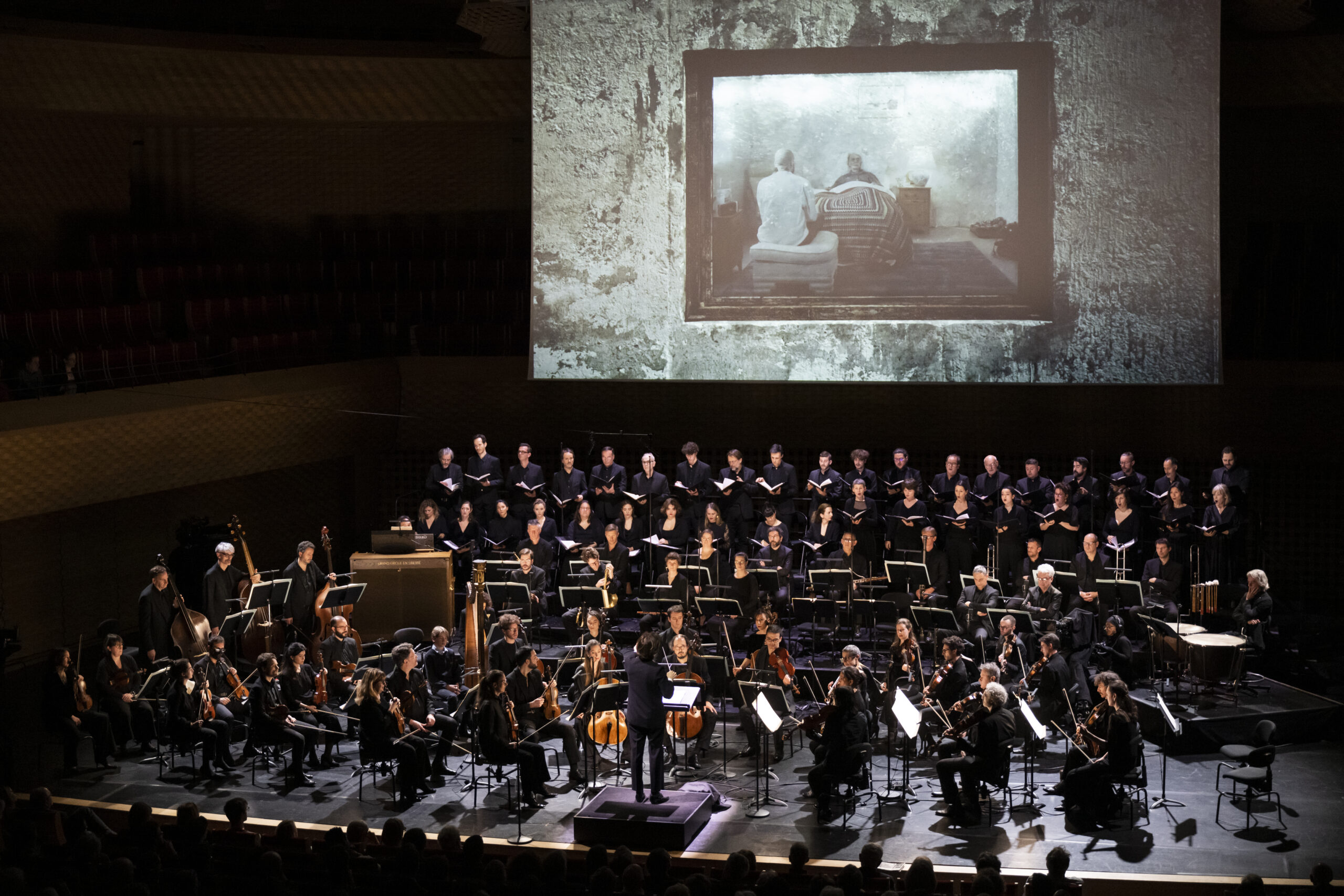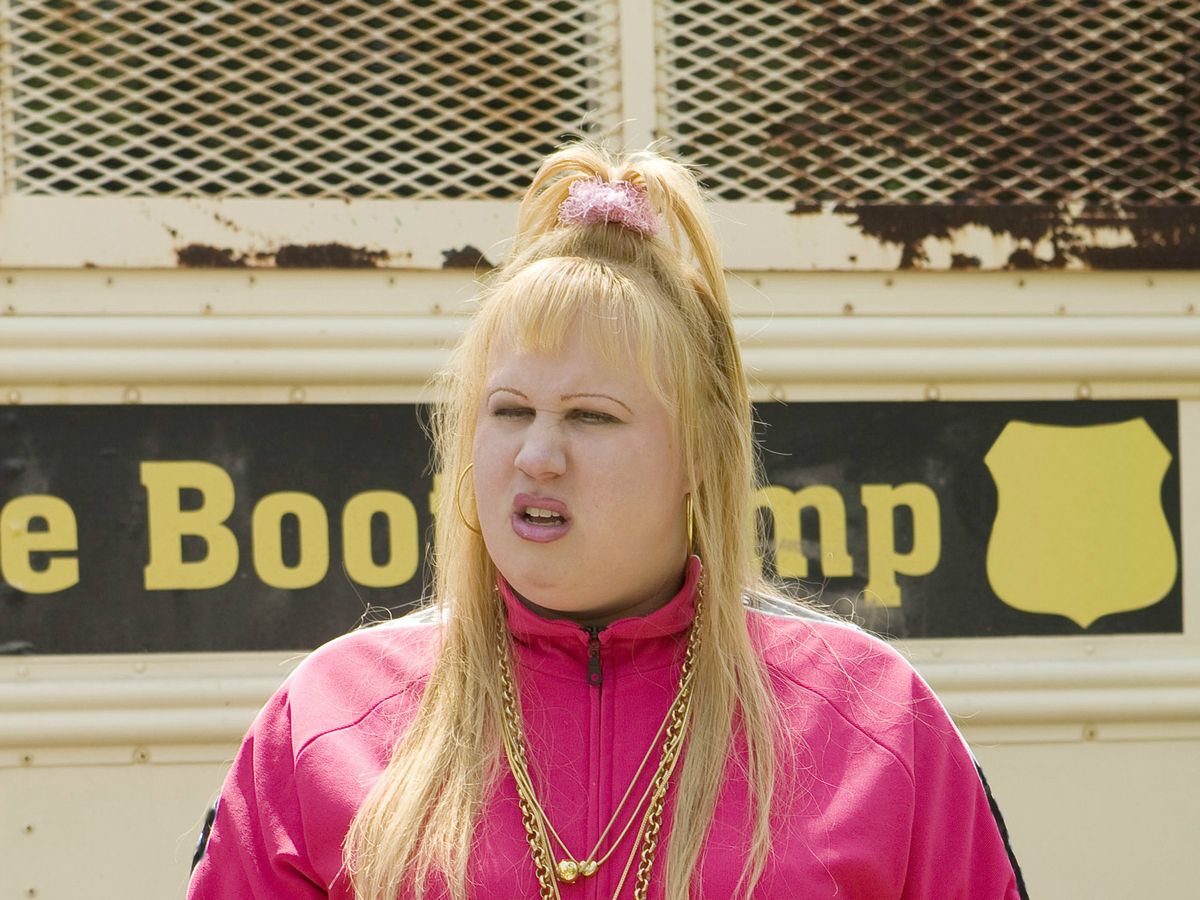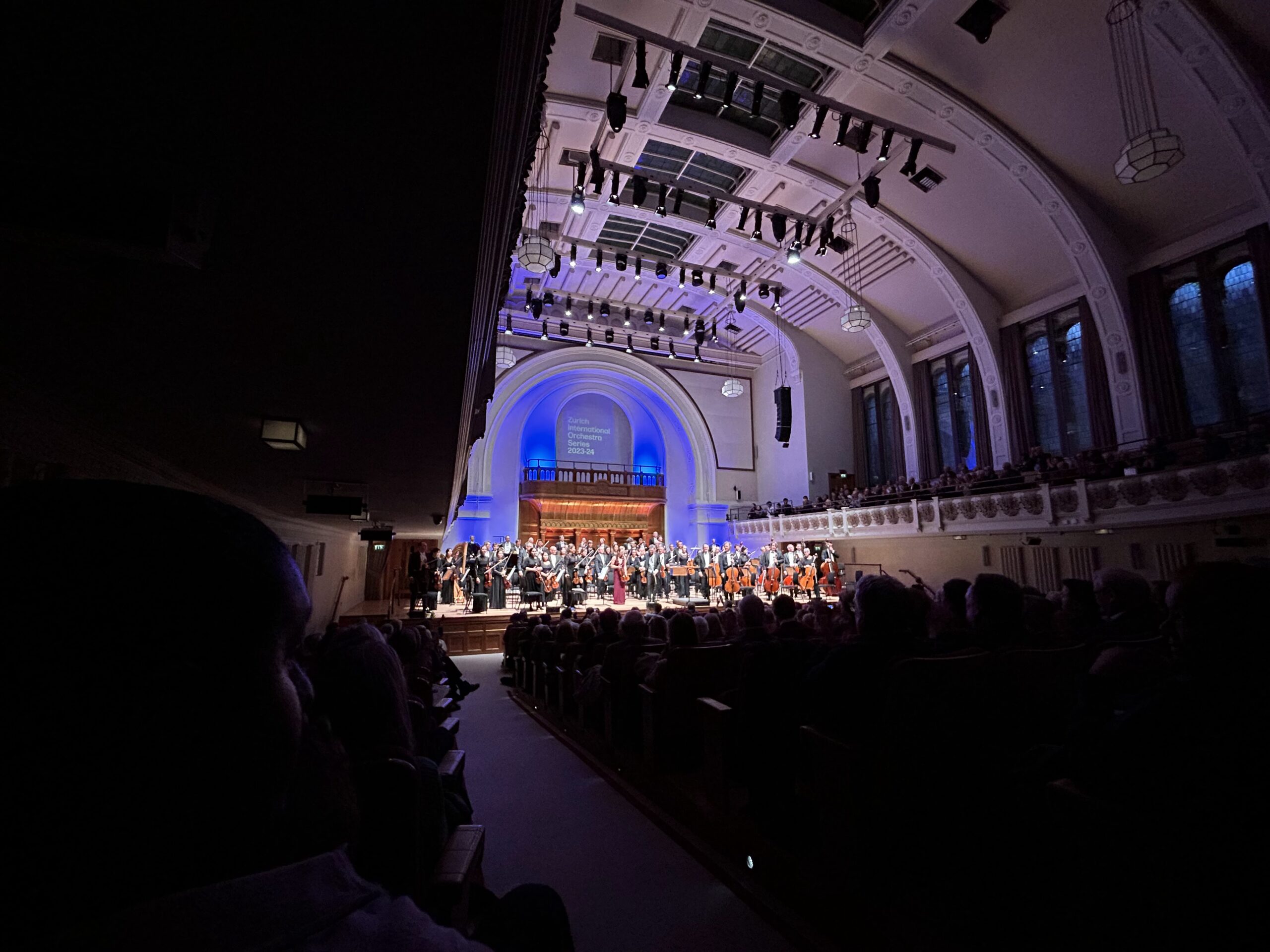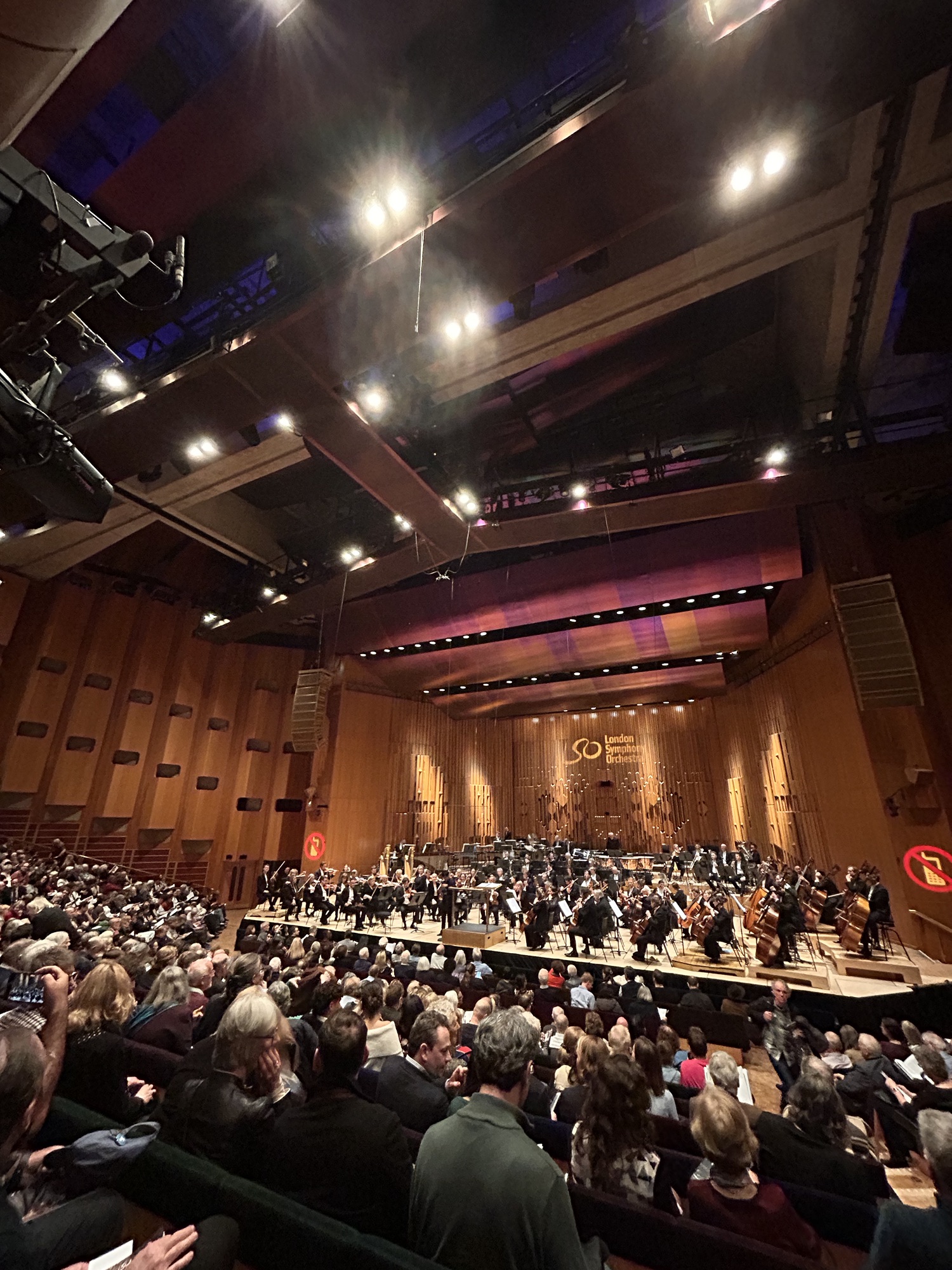Warning: This blog post contains graphic details about ancient funeral practices which some readers may find disturbing.
Until earlier this week I was unaware that sky burials – the custom of dead bodies on mountain tops being left for vultures to feed on – was an actual thing. Indeed, directly after Insula Orchestra’s performance of Faure’s Requiem accompanied by what appeared to be a piece of apocalyptic storytelling by visual artist Mat Collishaw at La Seine Musicale in Paris, I’d assumed that sky burials were the stuff of fiction.
They’re not. The custom is part of an ancient Zoroastrian tradition that dates back millennia and is believed to still be practised in Tibet, Mongolia and other areas of China, in addition to Iran and India. The process began as a practical response to the challenges of disposing of bodies in areas with difficult terrain and has at its core the sense that the body after life is a vessel, the constituent parts of which are passed back to nature.
Mat Collishaw’s video installation (commissioned before and postponed by the COVID pandemic) that accompanied Insula’s performance of Faure’s work was carefully introduced from the stage by Insula Orchestra conductor Laurence Equilbey and understandably so. In Collishaw’s arresting depiction of the practice, set in a distinctly dystopian world, there are some deeply unsettling and, in some cases, detailed sequences that tug at deeply held taboos around death.
In the visual artist’s depiction, the residents of a tower block at the end of their lives, are visited by loved ones. Outside the grim block of flats, vultures circle. Inside the dying relatives breathe their last breath as they picture beautiful natural settings through the middle of which water follows its inexorable path from waterfall to river mouth. After death, these same relatives are seen carrying the deceased up to the top floor of the building, open to the world and the circling vultures.
Opening footage from the premiere of Sky Burial performed at Baden-Baden
I spoke to Mat the morning after the performance, ostensibly wanting to find out more about the technical elements of the production, but also to reflect with him on my own experience watching it.
“Bear in mind it’s a Requiem,” he says to me, “It was never going to be that cheerful. If I just made something that was angels, clouds – something that was totally ethereal – I don’t think it would have paid respect to the piece. I think what I’ve contributed here is some grist.”
Grist is one word for it, but I think there’s more to it than that. The video sequence responds to the live performance led by conductor Laurence Equilbey. It is at times a deeply unsettling watch because of the visual choices the artist has made in response to the score. In this way, Collishaw’s visual design picks out the menace in Faure’s score and in essence amplifies it, making the listener more aware of the darkness in the music, ramping up its emotional impact as a result. The opening growling chord of the Kyrie is cut with one solitary vulture circling in slow motion, the menace in the creature underpinned by the terror in the opening chord. Similarly, later the tower block’s residents are pictured in white rooms surrounded by the machinery of end-of-life, simple acts in simple surroundings accompanied by seemingly simple vocal and string lines. Accompanying a silent video sequence, the score builds and recedes as though all of us are sighing in response. These and other intentional combinations of sound and vision intensify the experience of listening to Faure’s work. It is a visceral experience and at times one I find profoundly moving.

I suggest to Mat that the visuals helped me reconnect with the core emotional intent of the score. Has the work’s enduring popularity over the years lessened its impact resulting in a sanitised listening experience? Had he deliberately wanted to do something with this to restore the music’s impact?
“I think that would be fair to say,” he replies. “I think it [the Requiem] might have become like a lot of French painters from that period now appear in jigsaws, or chocolate boxes – 19th or 20th-century culture that has become part of the wallpaper really. There are moments in this Requiem when it really does kind of get a little dark, which is the point that I’ve introduced the vultures into the sequence.”

Those sequences are a brutal contrast with hoped-for beauty during each recurring death scene. It is the most gruesome of twists foreshadowed by the seeing the bereaved hauling corpses up the stairs of the tower block up to the top floor for the vultures circling in anticipation. We have a suspicion about what we’ll see next and we do.
The effect is chilling, challenging us to look at the Western taboos about death through the prism of an alternative method of disposal. Western traditions see the body either destroyed and scattered or decomposed underground. In all cases, the body is returning to nature, but for the majority of us, we’re shielded from the process. The only difference here is that decomposition is quicker and it benefits a different part of the ecosystem.

“The practice of feeding the dead to vultures, in places like Tibet, and Turkey is something people of other cultures do. Maybe having a body devoured by worms could be equally appalling to them. There’s an interesting shift there between different cultures and certainly something that we’re used to disposing of in quite an elegant, discreet way.”
From a technical perspective, it’s a surprisingly stressful creation. Running to 36 minutes, the live-action (real people filmed in front of a green screen) is incorporated into numerous CGI scenes which are then edited live in time to the music played by the orchestra. Participants in the project were recruited via social media and asked to imagine ‘on set’ themselves in the setting of a dying relative (itself a challenging experience for an individual), although Collishaw is keen to emphasise that he wasn’t directing them to act. All of the footage captured and CGI sequences created were then cut together with one recording, after which the complete work was cut up into separate small sequences to be vision mixed live in performance.
Each scene is linked by a sense of inexorable movement reflected in the pulse of Faure’s score. In this way, the constant movement surfaces an overlooked element in the work – the sense that we are not in death standing still but still moving forward. Death is not the end; the cycle is constant, perhaps most obvious in the perpetual movement heard in the final movement In Paradisum.

There’s often a fear that visuals will distract from the purity of the musical experience. Some concert experiences with accompanying film – even live performances of film scores – are often perceived as somehow being of lesser value as concert experiences. And yet, if the visual storytelling is strong and raises thoughts and questions, then the music is embedded because our senses were enlivened during the performance. In this way, I found the accompanying video storytelling triggered closer attention to the elements that make up this well-loved if taken-for-granted score, exposing elements and emotional responses which were in themselves deeply unsettling. Some of this is to do with Faure’s writing. Far from saccharin, ‘light’ or serene, listening to the work on its own now has the power to completely unsettle me. It is as though the ‘scenic creation’ has left a mark on the page that is difficult to remove.
The Insula Orchestra’s and choral ensemble Accentus performance was raw and unflinching, exposing the intricacies of Faure’s writing. The inclusion of a boy treble in the Pie Jesu provided a gritty unembellished texture that heightened the connection. Wind textures were solid and weathered, the brass bright and precise and the upper string melodies played with needle-like clarity. When the double basses joined the organ with their low notes the ominous depth of sound made the interior of the venue take on a far more cavernous feel.
Conductor Laurence Equilbey’s precise direction – tiny movements with her baton – had an almost surgical feel to it. It was as though the music needed little encouragement in order to sound and create terror, majesty and awe. All on stage created something that was poignant, the Requiem mass transcending something performed for an individual into a performance for all to collectively reflect on individual loss.
Faure’s Requiem ‘Sky Burial’ is performed in Aix-en-Provence on 17th February and in Hong Kong on 23rd February 2023.



